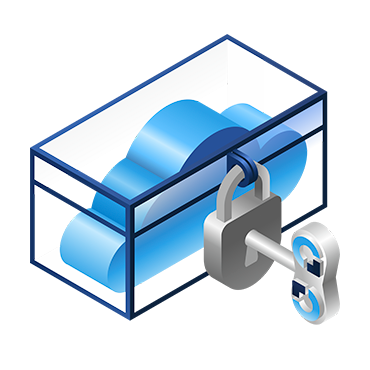K3S vs K8S – when to use each if you’re concerned about cloud security solutions?
Updated 10 Nov 2021
Kubernetes is unquestionably the most popular container orchestration tool, used by companies of all sizes around the world to migrate and host applications in the cloud. But, there has been a new addition of K3s, also known as lightweight Kubernetes, which is a smaller, simpler, more efficient, and faster version that accomplishes the same goals and has a smaller footprint.
Businesses nowadays scratch their heads when trying to figure out when to use K3s or K8s in their production. Deciding between them is a critical consideration for enterprises that are undertaking a digital transformation or want to migrate cloud-ready systems and applications to the cloud, as security solutions differ between the two. Each presents unique benefits and drawbacks that may lend themselves to certain companies and applications. So, let’s discuss what makes K3s and K8s different and when each should be used when cloud security is concerned.
What is Kubernetes (K8s)?
We have a whole separate blog post dedicated to defining K8s, discussing its advantages, and detailing its use cases, so we won’t spend too much time on it here. That being said, it wouldn’t hurt to quickly refresh our memories:
Kubernetes, or K8s, is the most popular microservices container orchestration platform, eliminating many of the manual processes involved in deploying, managing, and scaling containerized applications.
Read more here: Kubernetes in Cloud Migration Solutions
What is K3s and how does it differ from K8s?
K3s is a lighter version of the Kubernetes distribution tool, developed by Rancher Labs, and is a completely CNCF (Cloud Native Computing Foundation) accredited Kubernetes distribution. This means that YAML can be written to work on normal Kubernetes and will operate as intended against a K3s cluster.
In K3s, the memory trace or binary containing components to run a cluster is much smaller than that of K8s. Actually, K3s is specifically designed to be a single binary under 40MB that fully implements the Kubernetes API. To accomplish this, the developers removed many additional drivers that did not need to be there and were easily replaced with add-ons.
Thanks to its minimal resource requirements, it’s possible to run a cluster on a machine with at least 512MB of RAM, allowing pods and nodes to run on the master. Additionally, because it’s a small binary, it can be installed in a fraction of the time required to launch a K8s cluster! Generally speaking, it takes under two minutes to launch a k3s cluster with a couple of nodes, meaning apps can be deployed for learning and testing purposes in no time.
Both its adoption and reputation are growing swiftly too, with monthly users growing by the thousands, all while being crowned the best new developer tool by Stackshare in 2019.
Advantages of K3s
While K8s has many notable benefits, including its flexibility, portability, scalability, and ability to seamlessly accommodate much larger configurations, it is not the best choice in many situations. K3s edges ahead in many areas.
Small Size
The primary advantage of K3s is that it is small in size, under 100 MB, in fact, which allows it to launch a K8s cluster on smaller hardware with the least settings.
Fast Deployment
K3s can be installed and deployed with one command in less than 30 seconds.
Lightweight
Due to their small memory footprint, the Kubernetes can be up and running imminently, meaning that the binary, which comprises all the non-containerized components needed to run a cluster, can be much smaller.
Continuous Integration
Due to their small size and lightweight environment, continuous integration is more straightforward. It helps in automating the integration of codes from numerous contributors into a singular project.
Perfect for IoT and Edge Computing
Thanks to effective support for ARM64 and ARMv7, K3s is highly efficient for Kubernetes distribution in production workloads for resource-restrained IoT devices.
Simplified and Secure
A single binary file under 100 MB is able to package K3s, making it simple and easy to secure with far fewer complications.
K3s, K8s, and Cloud Security
For certain industries, such as healthcare or banking, where data privacy is imperative, the security of their cloud environment or cloud-based applications and data will be the primary concern. While the choice between K3s and K8s may be forced due to the size of applications, data, and infrastructure required, it might be important to consider selecting the suboptimal option if it provides better security.
Before we continue, it’s important to point out that K3s benefit from tighter security deployment than regular Kubernetes thanks to their small attack surface area.
While it might be cumbersome to utilize K3s to secure clusters for cloud migration and hosting of large applications and vast amounts of data, the extra time and effort required may be beneficial if security is heightened.
For example, for an industry such as healthcare that has been slow to undertake digital transformations because of complex decisions surrounding private health records, the more secure K3s may be preferred.
Should You Choose K3s or K8s?
It is evident that both K3s and K8s have their advantages and disadvantages which make them uniquely different from each other, while on the face of it, it may seem that they are two similar versions of the same thing. Both are very useful, but given various business and usability situations, certain features can have a marked impact.
We have seen how K8s can benefit large systems and applications, and with that in mind, large enterprises with an abundance of critical data that distribute their workload via several cloud servers may choose to use K8s, which will benefit them in many ways.
Small-to-medium-sized businesses may decide to use both K3s and K8s because the actual application size will not remain constant throughout its lifecycle. It will be beneficial for them to use K8s to cope with the heavy workload, but to quickly and efficiently test a single cluster in smaller productions, K3s provide many lean advantages. Keeping a steady balance between K8s and K3s helps businesses save crucial time and money while maintaining an efficient and agile workflow.
Small businesses that do not deal with large applications often automatically select K3s because they are much quicker at deploying applications with smaller workloads, and installation, operation, and updates are easy.
Developers that spend a lot of time with IoT (Internet of Things), and edge computing have a sizable advantage when choosing K3s as their chosen Kubernetes distributor. Especially considering they will be working with resources that contain low-end computational hardware such as Raspberry Pi. K3s use one small binary file that runs on IoT devices thanks to ARMv7 and ARM64 support.
Conclusion
K8s solved the distributed computing dilemma but has since become rather complex. Rancher took all Kubernetes’ principal workflows and modified the tool into a lighter version of Kubernetes, named K3s.
Now you know about the important differences between K3s and its predecessor, K8s, and which situations are best to use each one, such as when using a Raspberry Pi or ARM device, or if you just want to easily set up a simple and quick development environment. This is also an important benefit for businesses that will be migrating applications to a cloud cluster such as GKE or Azure, as the transition becomes easier.
Moreover, when considering continuous everything as it relates to a specific system or application, companies may find utilizing a set of principles such as GitOps to be easier and more efficient with K3s. GitOps merges Git with Kubernetes’ convergence features and works as an operating framework for creating and delivering Kubernetes-based environments and applications.
You might think k3s is the superior option to regular Kubernetes (K8s), but limitations do exist. Currently, it doesn’t support more than a master or any database other than SQLite on the master node. So, defining requirements and objectives is vastly important when choosing a default container orchestration tool.
If your primary concern is ensuring your cloud-based environment and applications are secure, K3s is your best option.



